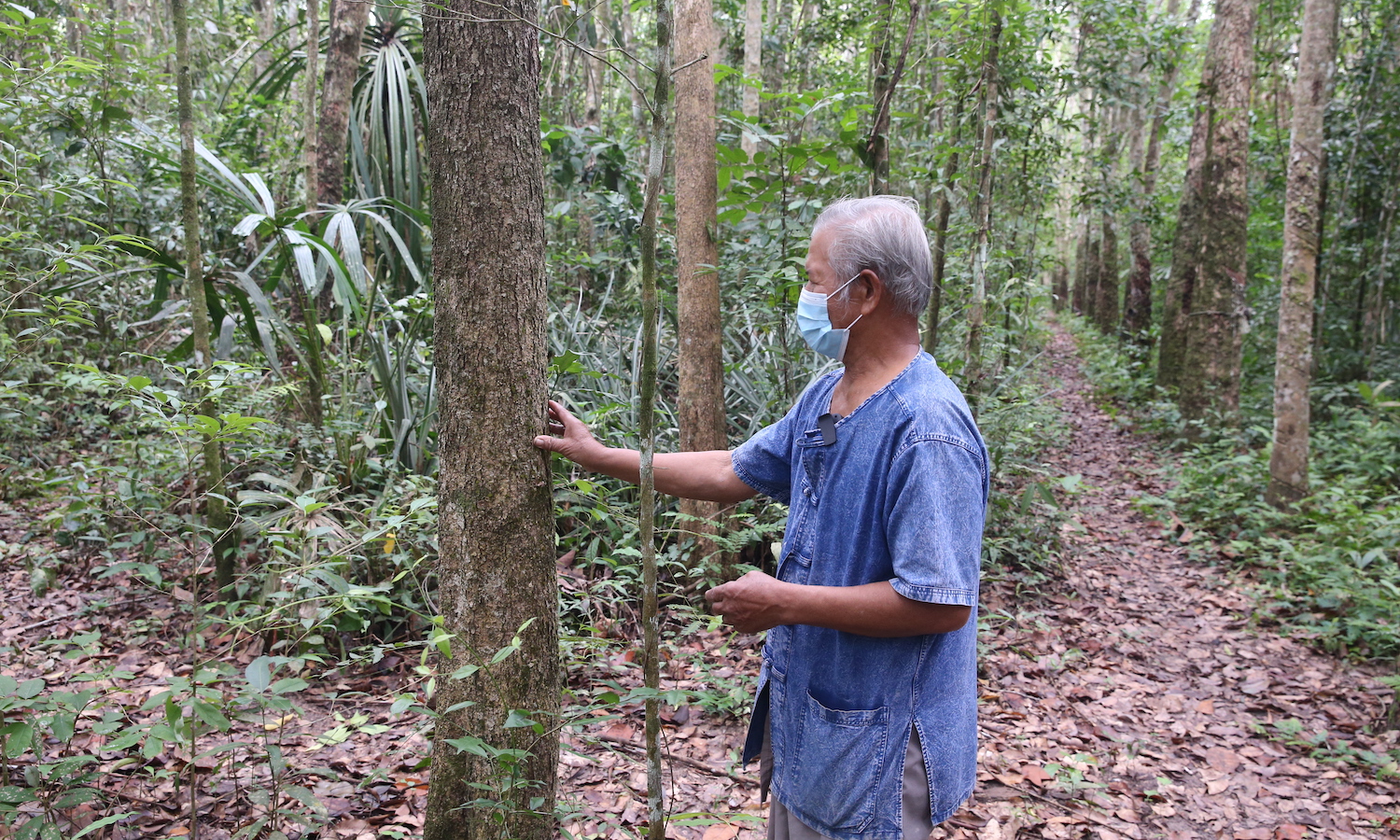The rubber in the sole of your shoe may have a story to tell. Last month, the first shoes sourced with Regenerative Outcome Verified – ROV™ rubber reached the global market. The rubber comes from a small corner of Thailand, where rubber-tappers and farmers are transforming a monoculture rubber plantation into a diverse canopy. Now, farmers also grow mango, coconut, turmeric and a host of other crops that are enriching the soil, raising incomes, improving nutrition and forming a protective canopy that shields people and plants from the rising heat of climate change.
The ROV™ standard is the result of a cutting-edge partnership between the farmer-led Regenerative Rubber Alliance in Thailand; VF Corporation partner brands the Timberland®, The North Face®, and Vans®; Terra Genesis, a regenerative design and development firm; and Smallholder Data Services. It is one example of the regenerative agriculture movement that is gaining traction among farmers, brands and the global climate change community.
We know that food and agriculture systems and climate change are interlinked. Food systems make up about 30 percent of global greenhouse gases, and climate change is rapidly impacting what, how, and where crops can be grown and the people who farm. Regenerative agriculture can both mitigate the greenhouse gas emissions from agriculture and help farmers adapt to climate change, while more broadly benefitting the health of people and planet.
But to unleash the potential of regenerative agriculture, farmers, Indigenous Peoples and other land stewards must be front and center in articulating a vision and setting direction for regenerative agriculture. Their leadership is crucial, both on the ground and in global convenings on climate change and food systems. At meetings such as this week’s AIM for Climate Summit in Washington DC, CEOs and government ministers will be moderating panels and delivering keynotes; farmers and Indigenous Peoples must also hold the mic.
Regenerative agriculture is practiced in multiple forms and scales—from young Kenyan entrepreneurs who produce frass, an organic, insect-based alternative to chemical fertilizers to farmers in Haiti, who intercrop cotton, peanuts and okra and digitally verify the regenerative status of their crops. As with the farmer-led Regenerative Rubber Alliance in Thailand, their leadership is essential for the creation of regenerative food systems and for establishing the standards to define a regenerative-branded product. Without a strong and accepted framework for regenerative agriculture, it risks becoming a tag-line rather than a solution for the health of people and planet.
A series of upcoming convenings, from the AIM4C meeting to the World Farmers’ Organization General Assembly (May 21-24), could help set the stage for a food and climate breakthrough at COP28 (the global climate summit of all nations) next December in Dubai. Specifically, two tangible outcomes could help propel regenerative agriculture forward.
First, a coalition of large funders, landscape stewards, farmers, scientists and businesses could deliver a holistic system for consistent measurement of regenerative outcomes that span from soil health to biodiversity restoration, farmer well-being to community voice and participation. With food producers, Indigenous Peoples and local communities at the center, the Regen10 network is leading a global, collaborative initiative to develop such a framework. One member of that network is the Ikea Foundation, which works with 40 partners developing regenerative systems in Africa and Asia. As Nico Janssen, Programme Manager of Agricultural Livelihoods at the foundation says, “Regenerative is not only regenerative in food production, but the whole regeneration of local communities and economies.”
Second, partners could deliver a platform that raises and coordinates funding to address the biggest barriers farmers face in adopting regenerative agriculture—barriers that include limited access to finance, technical assistance, subsidies, and policy.
As we look towards COP28, let’s remember that a transition from carbon-intensive, extractive food systems to food systems that are regenerative requires the leadership of the people who produce our food and steward biodiverse landscapes. Their experience and philosophies are essential to restoring balance between the land we cultivate, the natural world of which we are a part, and each other. Their work is central to advancing food and nutrition security and coping with climate change. Beyond a seat at the table, they need to be engaged as equal partners, and equipped to implement change on the farms and across the landscapes they steward.
Articles like the one you just read are made possible through the generosity of Food Tank members. Can we please count on you to be part of our growing movement? Become a member today by clicking here.
Photo courtesy of Terra Genesis













